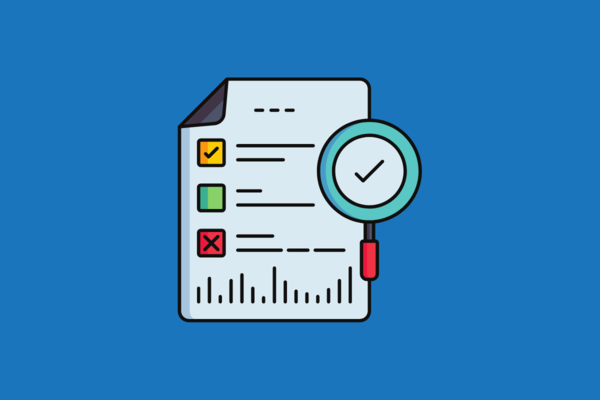The DISC personality test provides businesses with an easy-to-learn framework to better understand themselves and others. Once people have a thorough understanding of their DISC personality type, they learn how to adjust their behaviour to match others styles and specific situations. It is one thing to be aware of the DISC personality test and how it can benefit you; it’s another to know what your personality test results mean. Knowing how to interpret your DISC profile results is the most crucial component. Being aware of how you behave and react in specific situations can be very beneficial down the road (especially within a work environment). Let’s break down the DISC personality test results to have a better idea of what to expect.
Is There A Best Way To Read DISC Test Results?
Reading and interpreting your DISC test results is easy with Extended DISC®. The resulting report explains your natural behavioural style in a clear, concise, and easy to read format. There is no need to learn different terminology or attend training.
If you are not aware of DISC Personality Testing, here are some key points regarding this DISC profiling tool:
- The DISC Personality Test is an assessment tool that determines different behavioural types.
- It is not a pass or fail test, and there are no right or wrong answers. The questionnaire determines your behavioural style and provides you with information regarding your strengths and development areas.
- There are four primary behavioural types. However, Extended DISC® reports on 160 different combinations, far more than any other tool on the market. You can be assured you won’t be ‘put in a box’ and will receive a report unique to your specific style.
- The DISC personality test helps people become more aware of their actions and behaviours. It is also an excellent tool for understanding your colleagues, peers, and managers.
- The four behaviour types are Dominance, Influence, Steadiness and Compliance—an acronym for DISC.
We encourage clients to refer back to their DISC personality test results to get the most from the assessment. The report is designed so you can turn to any page in the report and understand it. When reading your results for the first time, there is a best way to read the DISC Test Results. Let’s break down how to read the DISC test results using the Extended DISC® Standard Assessment.
Step One: If you are not familiar with DISC theory, read pages 2 and 3 for background into Extended DISC®.
Step Two: Turn to page 4 of the report, where you see the two profiles:
- First look at Profile II, your natural behavioural style.
- Identify the DISC styles above the centre line and note their percentages.
- Order them by highest to lowest percentage to identify your dominant behavioural style and combination style.
Step Three: Look at Profile I to identify your adjusted style.
- Identify the DISC styles above the centre line and note their percentages, ordering them from highest to lowest percentage.
- Identify how you have emphasised or de-emphasised certain dimensions and think why this might be. Do you have to be more direct and authoritative in your role or do you have to follow instructions more precisely than you usually would.
Step Three: Turn to page 5 to view the Flexibility Diamond. The Extended DISC® diamond describes how you expend energy or find certain behaviours easy.
Step Four: Read pages 6, 7, and 8 for an overview of your attributes, strengths and motivators.
Step Five: Read pages 9 and 10 to understand how you naturally behave in a team environment
Step Six: Read pages 11 – 13 to understand behaviour and actions that take more or less of your energy
Step Seven: Read pages 14 and 15 to understand your stress triggers and how to alleviate stress.
Once you have read through your DISC test results, you can pick up the report and flick to any page. There is no logical way to read the report, and you can turn to any page to remind you of your results.
What Do My DISC Test Results Mean?
There will be no right or wrong answers in your DISC test results. The test is an evaluation. It is not a reflection of your skills, experience, knowledge, or learned behaviour. The DISC test results evaluate your natural behavioural style and how you tend to respond in a workplace environment.
Your DISC assessment result is a self-assessment that identifies your natural DISC personality type, strengths and development, communication style, and stressors. The DISC assessment report provides specific and unique tips to support your development and enhance communication and leadership in the workplace.
The majority of people will not score high on one particular style. In fact, less than one per cent of the global population has only one dominant style. Most people have a combination style consisting of 2-3 styles. For example, you may score high on dominance but may also show levels of influence. None of the styles is better than worse than another. You can exhibit behaviours from all four styles. However, these will consume more or less energy. Here is a break-down of each DISC personality type to better understand what they mean:
Dominance:
- Goal-driven
- Decisive
- Tough
- Strong-willed
- Competitive
- Demanding
- Self-Confident
- Authoritative
Influence:
- Optimistic
- Persuasive
- Emotional
- Talkative
- Sociable
- Inspiring
- Energetic
- Relatable
Steadiness:
- Calm
- Steady
- Team player
- Patient
- Trustworthy
- Modest
- Sympathetic
- Resists change
Compliance:
- Detail-oriented
- Private
- Precise
- Logical
- Careful
- Formal
- Exact
- Requires lots of information
Are There Other Interpretations Of DISC Profile Results?
Terminology and interpretations of DISC Profile results tend to differ slightly from tool to tool. However, there are similarities in their interpretation. The more advanced tools, such as Extended DISC®, look at more than just the four primary disc styles. Extended DISC® identifies and reports on 160 different styles. These tools also include a natural and adjusted profile.
FQ1: Should DISC profiles be explained to employees?
We strongly recommend you explain the DISC profiles to employees. Whether it is a lengthly debrief over the phone or video conference or a small written debrief. DISC personality test results are valuable to help employees understand their strengths and weaknesses and how they naturally tend to behave in the workplace. These insights can help get the employee and the entire company moving forward.




